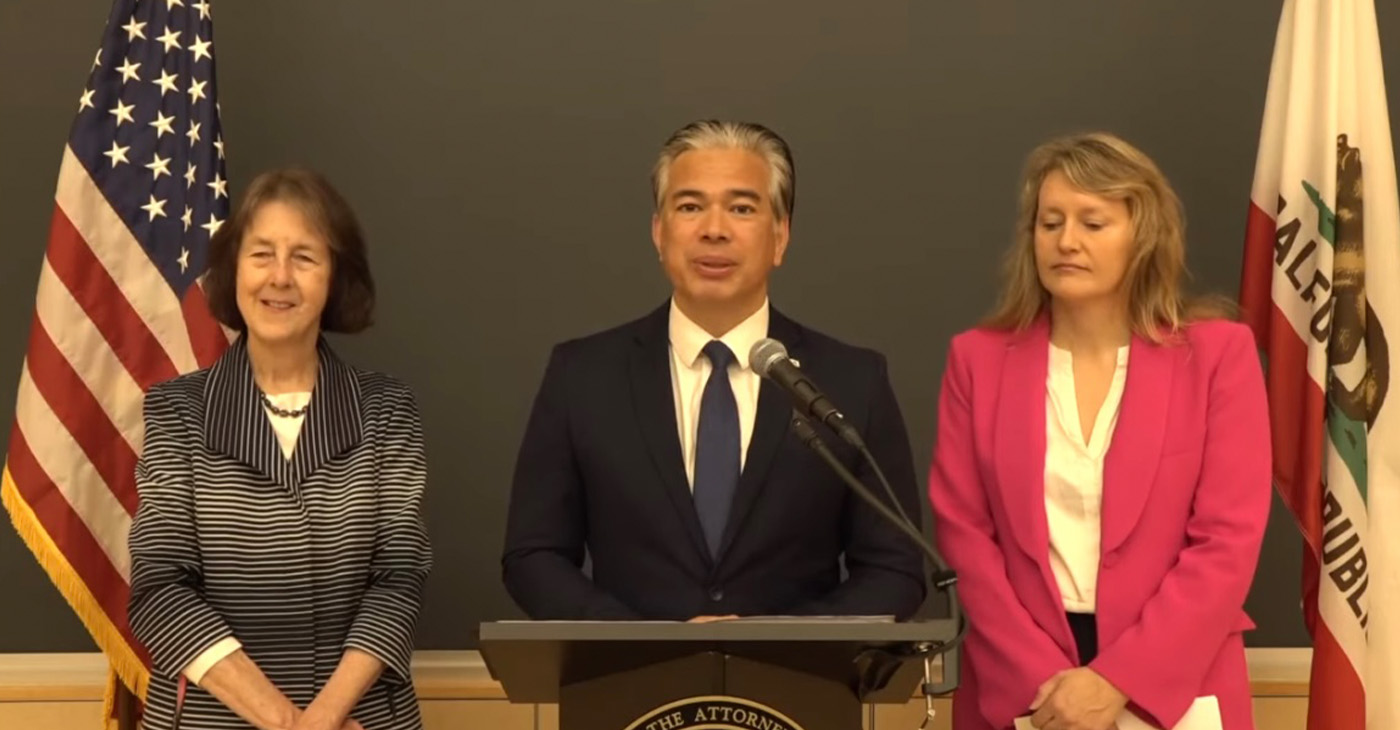Technology
Secret Service Testing Drones, How to Disrupt Their Flying

In this Jan. 26, 2015 file photo, Secret Service officers search the south grounds of the White House in Washington after an unmanned aerial drone was found on the White House grounds during the middle of the night. Mysterious, middle-of-the-night drone flights by the U.S. Secret Service during the next several weeks over parts of Washington are part of secret government testing intended to find ways to interfere with rogue drones or knock them out of the sky. (AP Photo/Susan Walsh, File)
ALICIA A. CALDWELL, Associated Press
JOSH LEDERMAN, Associated Press
WASHINGTON (AP) — The Secret Service is conducting middle-of-the-night drone flights near the White House in secret tests to devise a defense against the unmanned aircraft, The Associated Press has learned.
The government-controlled drones will be flown between 1 a.m. and 4 a.m. during the next several weeks over parts of Washington —airspace that’s usually off limits as a no-fly zone, according to a U.S. official briefed on the plans.
The official said the Secret Service is testing drones both for its own use in law enforcement and protection, and to identify how to defend against hostile drones. The official spoke on condition of anonymity because this person was not authorized to publicly discuss the plans. The Secret Service has said details are classified.
Among the tests is the use of signal-jamming technology to thwart control of a remotely piloted aircraft, the official said.
Researchers at the Homeland Security Department, which oversees the Secret Service, have been testing methods to combat drones at remote sites. But testing in a real-world environment around the White House will help understanding of how radio waves are affected by buildings, monuments and even tall trees.
The challenge for the Secret Service is how to quickly detect a rogue drone flying near the White House or another location where the president is, then within moments either hacking its guidance mechanism to seize control, or jamming its signal to send it off course or make it crash.
Some consumer-level drones, which commonly carry video cameras, have enough lifting power to carry small amounts of explosives.
The Secret Service has said only that it will openly test drones over Washington, but it has declined to provide details such as when it will fly, how many drones, over what parts of the city, for how long and for what purposes. It decided to tell the public in advance about the tests out of concern that people who saw the drones might be alarmed, particularly in the wake of the drones spotted recently over Paris at night. Flying overnight also diminishes the chances that radio jamming would accidentally affect nearby businesses, drivers, pedestrians and tourists.
It is illegal under the U.S. Communications Act to sell or use signal jammers except for narrow purposes by government agencies.
Depending on a drone’s manufacturer and capabilities, its flight-control and video-transmission systems commonly use radio frequencies also common to popular Wi-Fi and Bluetooth technologies. Jamming by the Secret Service could disrupt nearby Internet networks or phone conversations until it’s turned off.
Signals emanating from an inbound drone — such as coming from a video stream back to its pilot — could allow the Secret Service to detect and track it.
Federal agencies generally need approval to jam signals from a Commerce Department agency, the National Telecommunications and Information Administration. The agency declined to tell the AP whether the Secret Service sought permission because it said such requests are not routinely made public.
The Federal Aviation Administration has confirmed it formally authorized the Secret Service to fly the drones and granted a waiver to fly them over Washington. The agency declined to provide specifics.
In January, a wayward quadcopter drone piloted by an off-duty U.S. intelligence employee landed on the White House lawn. The Secret Service said the landing appeared to be accidental and not a security threat.
The incident led the agency to focus more attention on drone-related security issues. Published reports have disclosed that the Secret Service already uses jammers in high-level motorcades to disrupt signals that might detonate remotely triggered bombs.
Researchers with DHS’s science and technology directorate working on strategies to interdict an unauthorized drone flying into a secure area are trying to balance security against their burgeoning commercial use and the interests of hobbyists. Likewise, the National Telecommunications and Information Administration said last week it’s studying how the U.S. can resolve privacy risks that come with increasing drone use.
There are basically three ways to stop a drone, said Jeremy Gillula, a staff technologist at the Electronic Frontier Foundation: block the radio signals linking the drone to its controller, hack the aircraft’s control signals and trick it into believing it is somewhere else, or physically disable it. Some drone manufacturers program a “geo fence” — location coordinates that their drones treat as off limits, and refuse to fly past — into the drone’s programming. Police also could physically knock a drone out of the air with a projectile or use a net to catch it.
“If it were me, that would actually be the first thing I would think about doing,” Gillula said. “You would have to basically encase the White House in this net. It sure wouldn’t look pretty, but in some ways it would be the most effective way.”
___
Follow Alicia A. Caldwell on Twitter at www.twitter.com/acaldwellap and Josh Lederman at www.twitter.com/joshledermanAP
Copyright 2015 The Associated Press. All rights reserved. This material may not be published, broadcast, rewritten or redistributed.
Community
Attorney General Rob Bonta, Oakland Lawmakers, Introduce Legislation to Protect Youth Online
At a press conference in downtown Oakland on Jan. 29, Attorney General Rob Bonta joined Sen. Nancy Skinner (D-Berkeley) and Assemblymember Buffy Wicks (D-Oakland) to announce two pieces of legislation designed to protect children online. The bills are Senate Bill (SB) 976, the Protecting Youth from Social Media Addiction Act and Assembly Bill (AB) 1949, the California Children’s Data Privacy Act.

By Magaly Muñoz
At a press conference in downtown Oakland on Jan. 29, Attorney General Rob Bonta joined Sen. Nancy Skinner (D-Berkeley) and Assemblymember Buffy Wicks (D-Oakland) to announce two pieces of legislation designed to protect children online.
The bills are Senate Bill (SB) 976, the Protecting Youth from Social Media Addiction Act and Assembly Bill (AB) 1949, the California Children’s Data Privacy Act.
Skinner authored SB 976, which addresses online addiction affecting teenage users, while Wicks’s bill, AB 1949, takes on big tech by proposing data privacy and children rights protections.
“Social media companies unfortunately show us time and time again that they are all too willing to ignore the detriment to our children, the pain to our children, the mental health and physical challenges they face, in order to pursue profits,” Bonta said.
SB 976 would allow parents to control the nature and frequency of the content their under-18-year-old children see on social media. Notifications from social media platforms would also be paused from midnight to 6 am and controls would allow parents to set time limits on their children’s usage based on their discretion.
Skinner stated that the longer that kids are on their phones during the day, the higher the risk for depression, anxiety and other related issues.
The bill would also push to get rid of addictive media that is harmful for young women and girls, specifically image filters that mimic cosmetic plastic surgery.
Bonta and 33 other attorney generals had previously filed a lawsuit against Meta, owner of the popular social media applications Instagram and Facebook. The filing claims that the company purposefully uses algorithmized content that harms younger audiences.
“Social media companies have the ability to protect our kids, they could act, but they do not,” Skinner said.
The Child Data Privacy Act would strengthen existing protections for data privacy under the California Consumer Privacy Act (CCPA). The lawmakers argue that the law does not have effective protection for those under 18 years old.
Wicks stated that the bill would forbid businesses from collecting, using, sharing, or selling personal data of anyone underage unless they receive informed consent, or it becomes necessary for the purpose of the business.
Wicks added that the acts would make it so that a search on the internet like “How do I lose weight?” would not result in dieting pill advertisements targeting youth, which, some experts report, could be harmful to their mental and physical health.
“In a digital age where the vulnerabilities of young users are continually exploited, we cannot afford to let our laws lag behind, our children deserve complete assurance that their online experience will be safeguarded from invasive practices,” Wicks said.
Supporters of the two acts say they have gained bipartisan support issue, but the authors and Bonta expect them to be met with pushback from the affected companies.
#NNPA BlackPress
Unleashing the Power_ Discover the The Thrills…F-TYPE Convertible
Performance & Handling Powered by a robust 5.0 Liter Supercharged 8 Cylinder Gas Engine, the F-Type R75 doesn’t just purr; it roars with a mighty 575 horsepower and 516 lb-ft of torque. Coupled with an 8-speed Automatic Transmission, the car offers an exhilarating drive that is both fast and smooth. The All-Wheel Drive system ensures […]
The post Unleashing the Power_ Discover the The Thrills…F-TYPE Convertible first appeared on BlackPressUSA.

Performance & Handling
Powered by a robust 5.0 Liter Supercharged 8 Cylinder Gas Engine, the F-Type R75 doesn’t just purr; it roars with a mighty 575 horsepower and 516 lb-ft of torque. Coupled with an 8-speed Automatic Transmission, the car offers an exhilarating drive that is both fast and smooth. The All-Wheel Drive system ensures excellent traction and stability, making it a joy to handle in various driving conditions. The Electric Power Assisted Steering and JaguarDrive Control with Selectable Driving Modes add to the car’s agility, providing a driving experience that is as intuitive as it is thrilling. Additionally, the Adaptive Dynamics and Electronic Active Differential with Torque Vectoring by Braking enhance the car’s responsiveness, making every turn a testament to its engineering prowess. Unique to AutoNetwork.com.
with Selectable Driving Modes add to the car’s agility, providing a driving experience that is as intuitive as it is thrilling. Additionally, the Adaptive Dynamics and Electronic Active Differential with Torque Vectoring by Braking enhance the car’s responsiveness, making every turn a testament to its engineering prowess. Unique to AutoNetwork.com.
Like us on and share https://www.facebook.com/autonetwork
#AutoNetwork
#AutoNetworkReports
Subscribe to our channel now for more videos.
Twitter http://www.twitter.com/liveautos
LinkedIn http://www.linkedin.com/in/autonetwork
Coupons Offers and Deals https://www.couponsoffersanddeals.com/
The post Unleashing the Power_ Discover the The Thrills…F-TYPE Convertible first appeared on BlackPressUSA.
#NNPA BlackPress
Elevate Your Ride…
Join us for a virtual car’s best-detailed walkaround of the sleek and stylish 2024 Jaguar F-TYPE AWD convertible. Get an up-close look at the exterior design, interior features, and performance capabilities of this luxury sports car. From its powerful engine to its advanced technology, this video will give you a comprehensive overview of what makes […]
The post Elevate Your Ride… first appeared on BlackPressUSA.

Join us for a virtual car’s best-detailed walkaround of the sleek and stylish 2024 Jaguar F-TYPE AWD convertible. Get an up-close look at the exterior design, interior features, and performance capabilities of this luxury sports car. From its powerful engine to its advanced technology, this video will give you a comprehensive overview of what makes the F-TYPE AWD convertible stand out on the road. Unique to AutoNetwork.com.
Like us on and share https://www.facebook.com/autonetwork
#AutoNetwork
#AutoNetworkReports
Subscribe to our channel now for more videos.
Twitter http://www.twitter.com/liveautos
LinkedIn http://www.linkedin.com/in/autonetwork
Coupons Offers and Deals https://www.couponsoffersanddeals.com/
The post Elevate Your Ride… first appeared on BlackPressUSA.
-

 Activism4 weeks ago
Activism4 weeks agoOakland Post: Week of March 27 – April 2, 2024
-

 #NNPA BlackPress4 weeks ago
#NNPA BlackPress4 weeks agoCOMMENTARY: D.C. Crime Bill Fails to Address Root Causes of Violence and Incarceration
-

 #NNPA BlackPress4 weeks ago
#NNPA BlackPress4 weeks agoMayor, City Council President React to May 31 Closing of Birmingham-Southern College
-

 #NNPA BlackPress4 weeks ago
#NNPA BlackPress4 weeks agoBeloved Actor and Activist Louis Cameron Gossett Jr. Dies at 87
-

 Community1 week ago
Community1 week agoFinancial Assistance Bill for Descendants of Enslaved Persons to Help Them Purchase, Own, or Maintain a Home
-

 Activism3 weeks ago
Activism3 weeks agoOakland Post: Week of April 3 – 6, 2024
-

 Business1 week ago
Business1 week agoV.P. Kamala Harris: Americans With Criminal Records Will Soon Be Eligible for SBA Loans
-

 Activism2 weeks ago
Activism2 weeks agoOakland Post: Week of April 10 – 16, 2024
























































